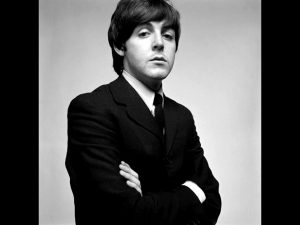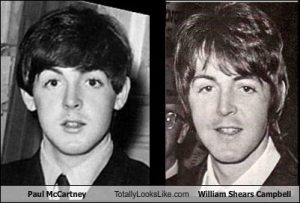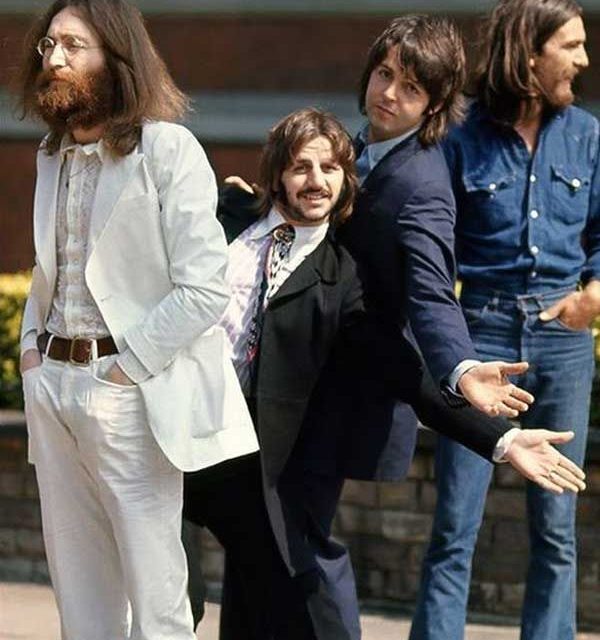
On September 23, 1969 – 50 years ago today – the venerable English tabloid the London Daily Mirror reported that Paul McCartney of the Beatles was dead. It was the first time the rumor was printed in the mainstream press.
In 2009, for what was then the 40th anniversary of the moon landing (or was it just a spectacular hoax?), Time Magazine printed a list of 10 of “the world’s most enduring conspiracy theories.” The list is as relevant today as it was 10 years ago, or so I think.
According to Time, the top five conspiracy theories are as follows. At number one is the “Kennedy Assassination”. At number two, the “9/11 Cover-Up”. At number three, and never more relevant than it is today, “Area 51 and the Aliens”. At number four is “PAUL IS DEAD”, and at number five is that “Secret Societies Control the World.” (Okay; one more: at number six is the “Moon Landings Were Faked.”)
I used to giggle about people who believed in crazy “theories” and considered such folks to be essentially harmless. Then I met a “true believer” and I stopped laughing. Between 1999 and 2003, I worked out at a 24-Hour Fitness gym in Walnut Creek, California. There was a very nice, soft-spoken guy – mid-40s, I’d say, with a trim van dyke beard, 6’ tall (or so), in decent shape – with whom I became friendly in the way you become friendly with someone in a gym. He claimed to be a research biologist and I had no reason to doubt him: he was intelligent and extremely articulate. Then one day, while we were sharing a weight machine, he casually mentioned something that made my ears stick up. I asked him if he was joking, and then I heard it all, calmly and logically expressed and without a hint of hysteria, doubt, or embarrassment. According to this self-proclaimed scientist, the earth was some 6000 years old; evolution was a secular lie perpetrated by the Masons (or the Jews, or the Rockefellers and Standard Oil; I honestly don’t remember so gobsmacked was I at this point); the creation story as described in the Old Testament was accurate scientific fact, and that the scientific community as a whole was already drifting in this direction and that within just a few years evolution would be refuted for the ungodly lie that it is.
I was astounded. My initial reaction was that the guy was as whacked as those 39 unfortunate members of “Heaven’s Gate”, the UFO Millenarian religious cult who had not long before committed mass suicide wearing identical black shirts, sweat pants, and brand new black-and-white Nike Decades athletic shoes, convinced – as they were – that this was how they were going to reach and board an extraterrestrial spaceship that was presumed to be following the Hale-Bopp Comet.
So my workout partner was nuts. But no, he wasn’t. But yes, he was. But no, he wasn’t.
I suddenly understood something I’d never really understood before, and that is that we will – each and every one of us – believe precisely what we choose to believe and, given the right (or wrong) circumstances, we can (and will) convince ourselves of pretty much anything. Under the right (or wrong) circumstances, “reality” becomes friable; “fact” becomes flexible, “common sense” merges with the delusional. I suddenly had an insight into how a great and civilized nation like Germany could, in a time of mass hysteria, embrace a Hitler; how religious extremists, in the name of their “god”, could perpetrate heinous crimes against their fellow people; how governments can keep making the same absurd, misguided, delusional mistakes over and over again. (Though the definition has been improperly attributed to both Benjamin Franklin and Albert Einstein, it still hits the nail on the head: “insanity can be defined as doing the same thing over and over again and expecting a different result.”)
So back to Time Magazine’s top conspiracy theories and indeed, conspiracy theories in general: under the right (or wrong) circumstances, we can convince ourselves of pretty much anything.
Case in point, number four on Time’s list: PAUL IS DEAD.
The first such rumor that Paul McCartney was “dead” circulated in early 1967, when the story spread that he had been killed in a traffic accident on January 7 on the M1 motorway. The rumor was refuted and put to rest quickly, but it was not extinguished entirely, and like a hot ember buried invisibly under debris, it bided its time, waiting for the right (or wrong) circumstances to flare up and burn once again.

That “flare up” occurred on Wednesday, September 17, 1969. That was the day that Tim Harper, who was an editor of the Drake Times-Delphic (the student newspaper of Drake University in Des Moines, Iowa), saw fit to publish an article he had written entitled “Is Beatle Paul Dead?” Apparently, a rumor had swept the Drake campus to that effect based on “clues” in recent Beatles’ albums. (It was claimed that if you played “Revolution 9” from the White Album backwards, you heard a message that supposedly said: “Turn me on dead man.”)
Under normal circumstances, a speculative article in a student newspaper in De Moines, Iowa would have had the same national impact as that proverbial tree falling in the forest with no one there to hear it, meaning no impact whatsoever. But September 1969 was not an “ordinary time.” The student newspaper editor who wrote the story, Tim Harper, later observed that:
“A lot of us, because of Vietnam and the so-called ‘Establishment’ were ready, willing and able to believe just about any sort of conspiracy.”

And indeed they were.
Kennedy was assassinated on November 22, 1963. The 888-page Warren Commission report, which was released in September of 1964, concluded that the assassination was carried out by a lone gunman – Lee Harvey Oswald, who himself was shot and killed two days later by Jack Ruby – and:
“The Commission has found no evidence that either Lee Harvey Oswald or Jack Ruby was part of any conspiracy, domestic or foreign, to assassinate President Kennedy.”
Few people believed that “no conspiracy” thing then and few people believe it today. And the societal distrust sown by the Warren Report was just the beginning. While Lyndon Johnson, President from 1963 to 1968, had his bright moments (his voting rights speech of March 15, 1965 remains one of the greatest presidential speeches ever given), he was, sadly, a pathological liar (yes, I know; we won’t get into that now), and his lies – particularly about the escalation of the war in Vietnam – tore the United States apart. A euphemistic term was coined to address public skepticism with Johnson’s claims: “credibility gap”, meaning “the apparent difference between what was said or promised and what actually happened or was true.”

When 1968 rolled around, things in the United States went from bad-to-worse. The Tet Offensive, which began shortly after midnight on January 30, proved that for all of America’s sacrifice of blood and treasure, the war in Vietnam was unwinnable. Martin Luther King was assassinated in Memphis on April 4, sparking riots in over 110 American cities; King was just 39 years old when he died. Robert Kennedy was shot in Los Angeles on June 5 and died the following day; he was 51 years old. The Democratic Convention, which took place in Chicago between August 26 and August 29 was a national disgrace, as the Chicago Police – under the direction of Chicago Mayor Richard Daley – clubbed and beat protesting students and tear-gassed convention delegates night after night on national television. (You want to talk “reality TV”? That was reality TV!) The year concluded with the election of Richard Nixon as the 37th President of the United States. Nixon’s relationship with “the truth” was no better than Lyndon Johnson’s; he continued to expand and escalate the war in Vietnam and the “credibility gap” grew ever wider.
For many young Americans, by 1969, trust of authority, trust in government, and trust in the “Establishment” had gone entirely into the toilet.
This, then, was something of the mood in the United States when that innocuous article entitled “Is Beatle Paul Dead?” appeared in the Drake Times-Delphic. The idea that there was a conspiracy to hide Paul McCartney’s death from the masses resonated entirely with the spirit of the time, and that little ember in a Des Moines student newspaper burst into an international conflagration. On September 23, 1969 – 50 years ago today – the London Daily Mirror reported that Paul McCartney was dead, and the world mourned.
The details of Paul’s untimely “death” were quickly fleshed out. It was claimed that in November of 1966, McCartney and his fellow Beatles argued during a recording session. He stomped out, drove off angrily, wrecked his car and was “decapitated.” (Evidence for this included the words to the 1967 song A Day in the Life: “he blew his mind out in a car; he hadn’t noticed that the lights had changed . . .”). England’s MI5 (the UK’s equivalent of Homeland Security), deeply concerned over the negative effect McCartney’s death would have on British morale, insisted that a substitute Paul be found.

That substitute was the winner of a Paul look-a-like contest who the remaining Beatles trained to impersonate Paul. (Depending upon the source, that person was either an “orphan from Edinburgh named William Campbell” or someone named William Shears Campbell who was later known as “Billy Shears.”) So filled with grief and guilt over the lie they had perpetrated, the remaining Beatles filled their lyrics and album artwork with secret messages, alluding to the truth of what happened to Paul.
So went the “story.”
These “secret messages” were found by Beatles fans everywhere. Song lyrics were dissected, ostensibly revealing all sorts of hidden information. Recorded songs were played backwards, likewise revealing “secret” messages of all kinds. Album covers were scrutinized and analyzed; the Sargent Pepper album cover, in particular, was a veritable font of secret information!

But the singular piece of evidence was the album cover of Abbey Road, which was released on September 26, 1969 (50 years ago this Thursday). According to the Paul-is-dead conspiracy theorists, the cover of Abby Road depicts a funeral procession crossing Abby Road in north London. At the head of the procession is John Lennon, dressed entirely in white, representing a heavenly, angelic figure. Next comes Ringo Starr dressed in black, representing an undertaker. At the rear is George Harrison dressed in working clothes, symbolizing a gravedigger. Finally, third from the right is McCartney, barefoot, with his right leg extended (the others have their left legs extended), representing the corpse. The left-handed McCartney holds a cigarette in his right hand, further proof – or so we are told – that the “Paul” in the photo is an imposter. Finally, the license plate on the Volkswagen Beetle on the left of the photo ends with “28IF”, which would have been McCartney’s age – 28 – “if” he were still alive.
To the question we’ve all been asking: where was Paul during all of this, and why didn’t he immediately put an end to it?
Paul was in deep mourning for his beloved band, and had, in fact, sequestered himself and his family on his remote farm in Scotland. You see, on September 20, 1969, John Lennon privately told his bandmates that he was leaving The Beatles, but agreed to keep the news secret in order to avoid hurting the sales of the soon-to-be released Abby Road. McCartney was tracked down by a reporter and photographer for Life Magazine. At first furious at being disturbed, he finally calmed down and allowed himself to be interviewed and photographed with his family.

That interview appeared in the November 7 edition of Life Magazine, which featured a photograph of McCartney, his wife Linda, and his two children taken on his farm on its cover. When asked about the rumor of his death, McCartney replied:
“Perhaps the rumor started because I haven’t been much in the press lately. I have done enough press for a lifetime, and I don’t have anything to say these days. I am happy to be with my family and I will work when I work. I was switched on for ten years and I never switched off. Now I am switching off whenever I can. I would rather be a little less famous these days.”
If you haven’t already, please join me on my Patreon subscription page.

Listen on the Music History Monday Podcast
Podcast: Play in new window
Subscribe: Apple Podcasts | Spotify | Pandora | iHeartRadio | RSS | More
